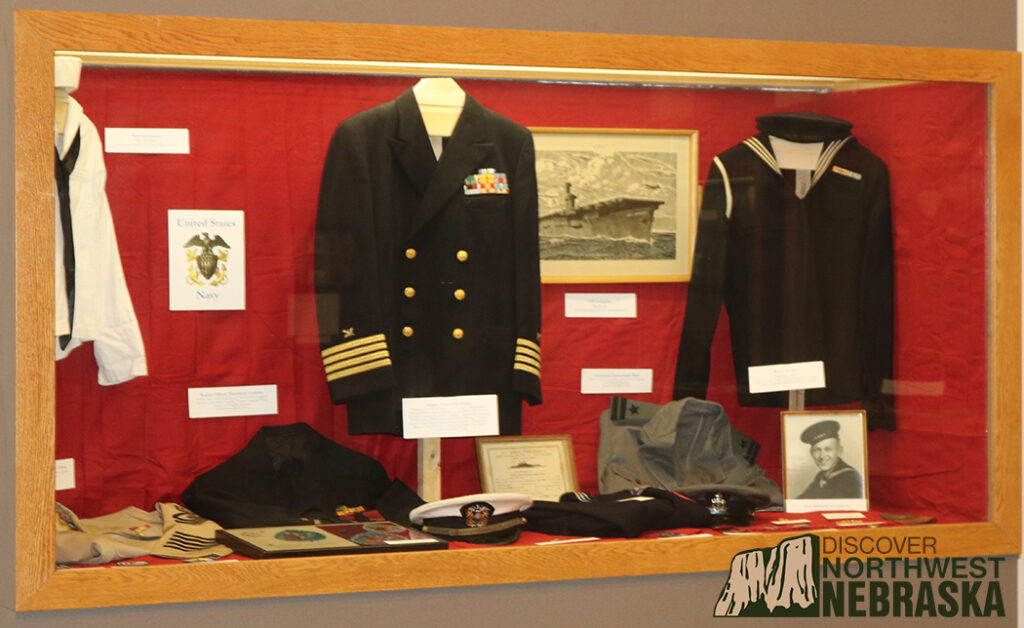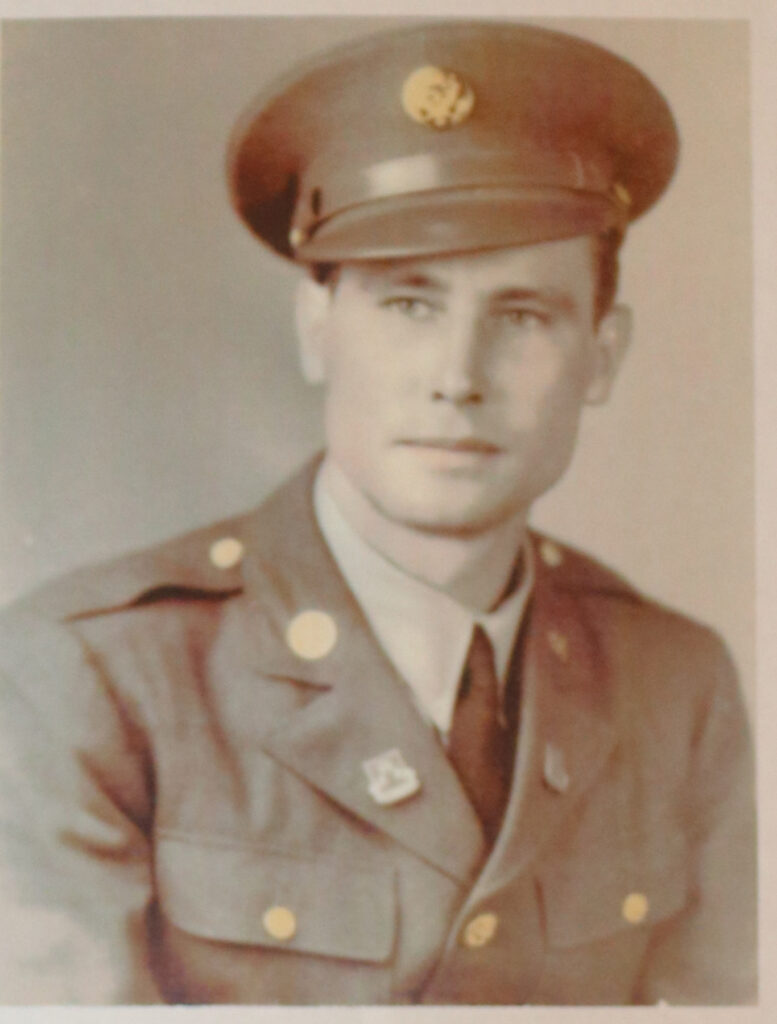By Kerri Rempp
Discover Northwest Nebraska
“Lots of rumors today that the Russians are getting very close. Hope it’s true.”
-Clayton Skoda, POW
Jan. 29, 1945
Seventy-five years ago, Rushville native Clayton Skoda wrote those words in a diary he kept as a World War II prisoner of war awaiting liberation. The Russians reached his POW camp days later, making it possible for him and his fellow soldiers to make their way home, and eight months later World War II came to an end.
Copies of Skoda’s diary, now on display at the Mari Sandoz High Plains Heritage Center in Chadron as part of the “Soldiering Into Victory” exhibit, detail his time as a prisoner of war.
Sept. 4, 1944: Moved on that morning, traveled all day till we got to Belfort. Was hauled all over town as the Germans seemed to be looking for some Headquarters of theirs. We stopped on the street for awhile and soon several of the French noticed that we were Americans, and they were giving us all sorts of fruit, bread and cigarettes. The Germans started chasing them away at the point of a bayonet.
Sept. 26, 1944: Was given a loaf of bread and a parcel for two men and loaded on the train to be sent to a NCO POW camp. They put 35 of us in about 1/3 of the car and the German guards had the other 2/3 of the car. It was so crowded that every one was in misery most of time.


Sept. 30, 1944: We found out our rations would consist of a cup of coffee or tea in the morning, mess gear of soup at noon, tea or coffee in the evening and six men on a loaf of bread every day except Sunday and Wednesday, when it was five on a loaf. We lived like that without any smokes until October 17th when we were issued our first food parcel. I hope I never have to eat that little amount or do without smokes that long again as it was really hell.
As the advancing Allied forces drew closer to the POW camp, Skoda noted in his diary that they were no longer allowed to use lights at night as the front lines were too close and a lack of coal meant no cooking.
The Sandoz Center’s “Soldiering Into Victory” exhibit commemorates the 75th anniversary of the end of World War II Sept. 2, 1945.
“It is primarily looking at Nebraska and the surrounding area and its involvement in World War II,” said Holly Counts. The exhibit will remain on display through the summer.

Counts cultivated the exhibit from three major collectors – Mark Hunt, Tony Bestwick and Roger Coleman – and augmented it with pieces loaned to the Sandoz Center from local families. The exhibit details moments of World War II from the trenches and POW camps to the home front. Uniform ribbons line a glass case and sweetheart pins and pillowcases are showcased alongside ration books and military patches. One display case houses items brought home by returning soldiers, including trench art, captured flags and foreign currency, while across the room WWII-era uniforms from the Army, Marines, Army Air Force and Navy are arranged.
Telegrams to Anna Moffatt carrying the news that her son Clarence was a prisoner of war hang beside letters donated by Barb Pelton Nixon, mementos saved from her two brothers’ time serving overseas. Another soldier, Paul Kreitman, made notes on a paper lunch bag detailing his experiences for his fiancé.
“Participated in operations against Japanese forces at Saipan and Guam and against enemy air action during the assault and occupation of these islands,” he wrote.
Skoda, who was drafted Feb. 22, 1942, was assigned to the 117th Reconnaissance Group and was shipped to England, North Africa, Italy and France, where his captain surrendered the group to the 11th German Panzer Division. He spent five months at the Stalag3C POW camp in Kustrine, Germany, before he and his fellow soldiers were liberated by the Russians Jan. 31, 1945. The notes in his diary recall the day.
Were awakened at 4 o’clock this morning and told to pack all our stuff as we are going to be moved out of here at 7 o’clock. Started to move us at 7 o’clock but the boys in the other compound are giving them a hard time. They get them out of one room and they run into another room. Jerry finally got things under control and started us out of the camp. Got down the road about 3 miles and were fired on by machine guns and shell fire from Russian guns. Several of our boys were wounded and some killed and a good many were cut off. Russians found out who we were so held their fire. Were taken back to the camp and was everyone happy to know we were cut off. Was back in camp only a half hour when we got bad news that they were going to try and take us out a new way. Started out and got on the edge of camp when the Russians fired again. We all took off and went back in the compound and took for the air raid shelters. In about an hour the Russians took the camp with very little resistance from the Germans. Spent most of the night in the air raid shelter. That night was quiet but was afraid the Germans would throw in artillery.
The Mari Sandoz High Plains Heritage Center is open Monday through Thursday from 10 a.m. to noon and 1-4 p.m. and from 10 a.m. to noon on Fridays. The center is a 2020 Nebraska State Passport stop.





